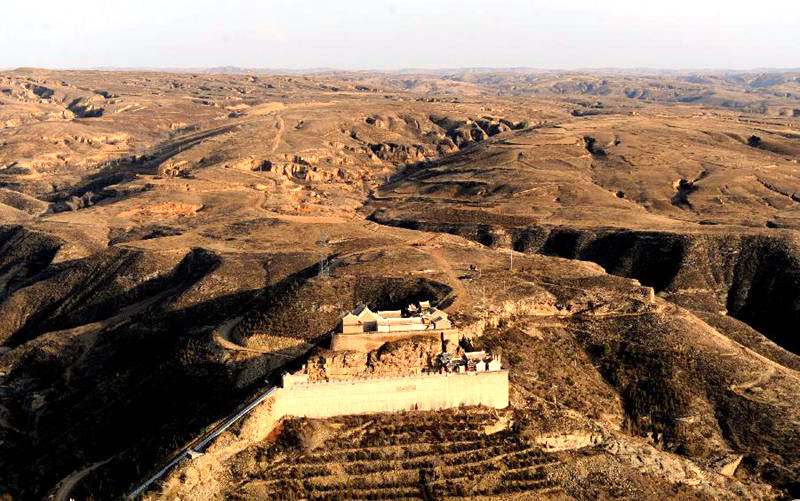Shimao site offers clues to Chinese prehistoric culture

The Shimao site, located at the northern Shaanxi Loess Plateau, is approximately 4,000 years old. It is considered to be a major world archaeological discovery in the 21st century.
The Shimao archaeological site contains the remains of the largest walled city from the late Longshan period to the early Xia Dynasty (c. 2070-1600 BC). It is located on the mountain ridge to the north of Tuwei River in Shimao Village, Shaanxi Province, at the edge of the northern Shaanxi Loess Plateau. Some experts estimate that the Shimao site could be Kunlun City, the capital of the Yellow Emperor (2717-2599 BC). The Shimao site provides a window for understanding the origins of Chinese civilization, and it could have been the center of northern China in the early Xia Dynasty.
The Shimao site occupies 4.25 million square meters and has a history of around 4,000 years. It is said to contain clues of “the eve of Chinese civilization” and has been selected as one of the top 10 new archaeological discoveries, the top 10 world field discoveries and major world archaeological discovery in the 21st century.
Yan Wenming, a professor of archaeology at Peking University, once indicated that the reason why the Shimao site has caught the world’s attention is that its total area is much bigger than the Liangzhu site in Zhejiang Province or the Taosi site in Shanxi Province. The discovery of the Shimao site has prompted changes in the understanding of Chinese prehistoric cultural patterns during the Neolithic Age. Its unique stone-built architectural structure, crucial geographical location and cultural significance have all provided new research materials for understanding the origin and development of Chinese civilization.
The Shimao site was discovered between the 1920s and 1930s. In 1976, Dai Yingxin, a research fellow from the Shaanxi Provincial Institute of Archaeology, followed the clues provided by local people and came to Shimao to conduct field investigations. Hidden away for thousands of years, the Shimao site was finally discovered by archaelogists. Since the 1980s, many institutions such as the Xi’an Banpo Museum have successively conducted investigations and small-scale excavations.
As a main component of the Shimao site, the Shimao ancient city site was discovered and affirmed in 2011 in an archeological investigation. Since 2012, the Shaanxi Provincial Institute of Archaeology, Yulin Municipal Relics Prospecting Team and Shenmu County Culture and Sports Bureau have conducted a joint archaeological team to excavate and reexamine Shimao together. They examined the structure of the Shimao ancient city site and its orientation, confirming that it consists of three complete and relatively independent stone-made enclosures: the Huangchengtai walled platform, inner enclosure and outer enclosure.
Moreover, an investigation of the east gate of the outer enclosure has uncovered a number of city wall relics, jade items and murals, indicating that the site played a key role in the cultural circles of Northern China. When archaeologists cleared up a length of collapsed walls beside the east gate of the outer enclosure, they found six jade fragments embedded in the walls, which proved the local rumor that jade could be found in these ruined walls. The fact that ancient people inserted jade into walls didn’t mean that they treated jade as a construction material, but rather that they believed jade could ward off evil. Their actions were rooted in the belief that jade is sacred. Before the excavation, Shimao jade items had made their mark both at home and abroad. Currently, there are almost 4,000 pieces of Shimao jade scattered around the world. The rareness of high-quality jade made these items particularly valuable.
Lu Hang is a reporter at the Chinese Social Sciences Today.
